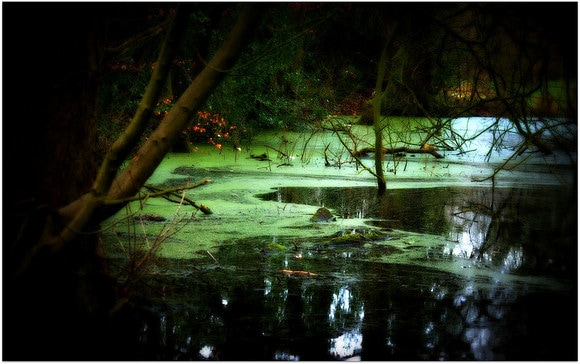|
The last part of this blog series discusses Cyanobacteria, which is more commonly known as toxic blue-green algae. This algae can be found in freshwater lakes, streams and ponds, and some types can produce toxins that sicken cats, dogs, horses, cows and birds. It appears on the top of the water as if it were painted a blue-green color, and some types grow on rocks and sticks on the bottom of the body of water.
The floating algae tends to cause liver disease, which can be seen as vomiting, diarrhea, lethargy, loss of appetite, and yellowing of the skin and the whites of the eyes. The types of algae that grow on rocks along the bottom are more likely to cause neurologic signs (tremors or seizures), and can be very dangerous, very quickly. Some types of algae also cause skin irritation. Not all algae produce toxins, but because you don’t know just by looking if the algae is dangerous, try not to allow your dog to drink from algae-covered water and do not encourage them to fetch algae-covered rocks from the bottom of creeks and rivers. If there are signs near a creek, pond, or river indicating toxic algae in the area, keep your dog out of the water! And, of course, if you are worried your pet may be showing signs of toxicity, seek veterinary care immediately.
0 Comments
Leave a Reply. |
Author
Our technicians and doctors write posts for this blog, hoping to keep our clients informed and entertained. We hope you find their topics helpful and fun to read about! Archives
December 2019
Categories |


 RSS Feed
RSS Feed



